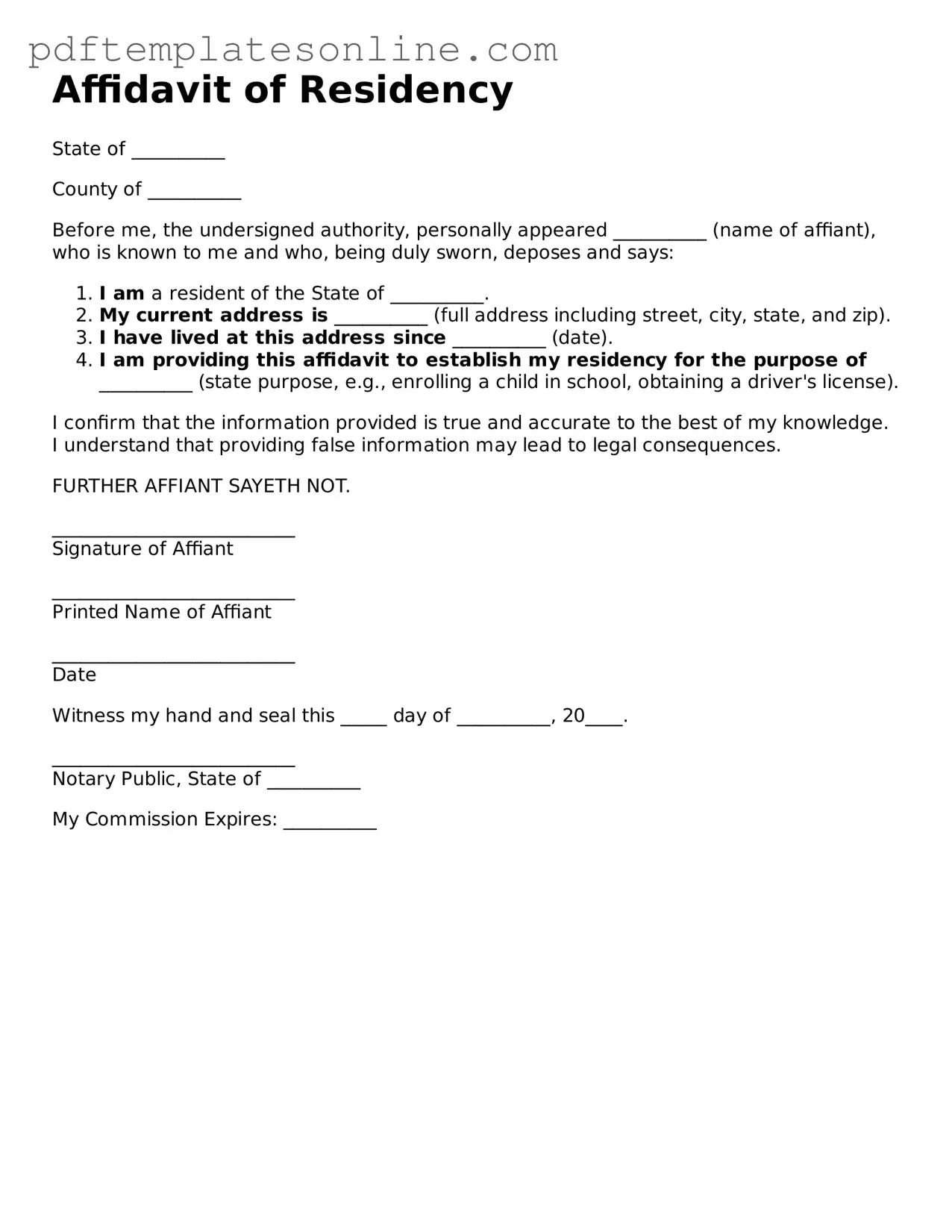Filling out an Affidavit of Residency form can seem straightforward, but many individuals make common mistakes that can lead to delays or complications. One frequent error is providing inaccurate or incomplete personal information. This includes omitting essential details such as the full name, address, or date of birth. Incomplete information can cause the affidavit to be rejected or require additional follow-up.
Another mistake is failing to sign and date the form. An affidavit is a sworn statement, and without a signature, the document lacks legal validity. It is crucial to ensure that the form is signed in the appropriate section and dated correctly. Neglecting this step can render the affidavit ineffective.
People often overlook the requirement for a notary public. An Affidavit of Residency typically needs to be notarized to confirm the identity of the signer and the authenticity of the document. Skipping this step can lead to the affidavit being deemed invalid. It is important to find a notary and complete this process before submitting the form.
Additionally, some individuals fail to provide supporting documentation. Many jurisdictions require proof of residency, such as utility bills or lease agreements, to accompany the affidavit. Not including these documents can result in the affidavit being insufficient for its intended purpose.
Finally, misunderstanding the purpose of the affidavit can lead to incorrect completion. An Affidavit of Residency is often used for specific legal or administrative purposes, and not understanding these requirements can lead to errors in the information provided. It is essential to read the instructions carefully and understand what is needed before filling out the form.
